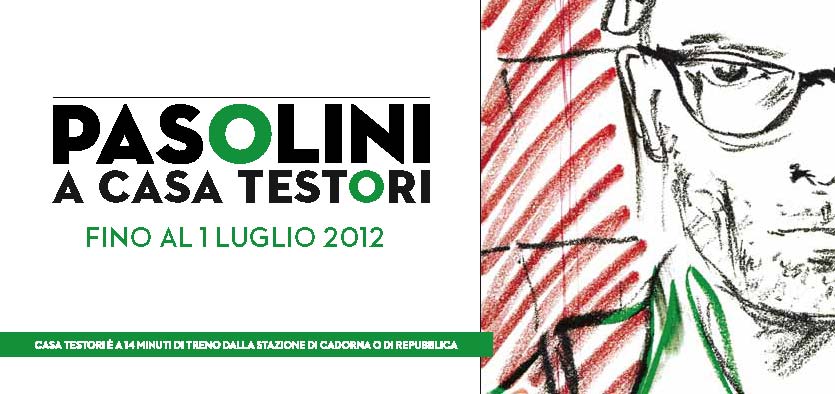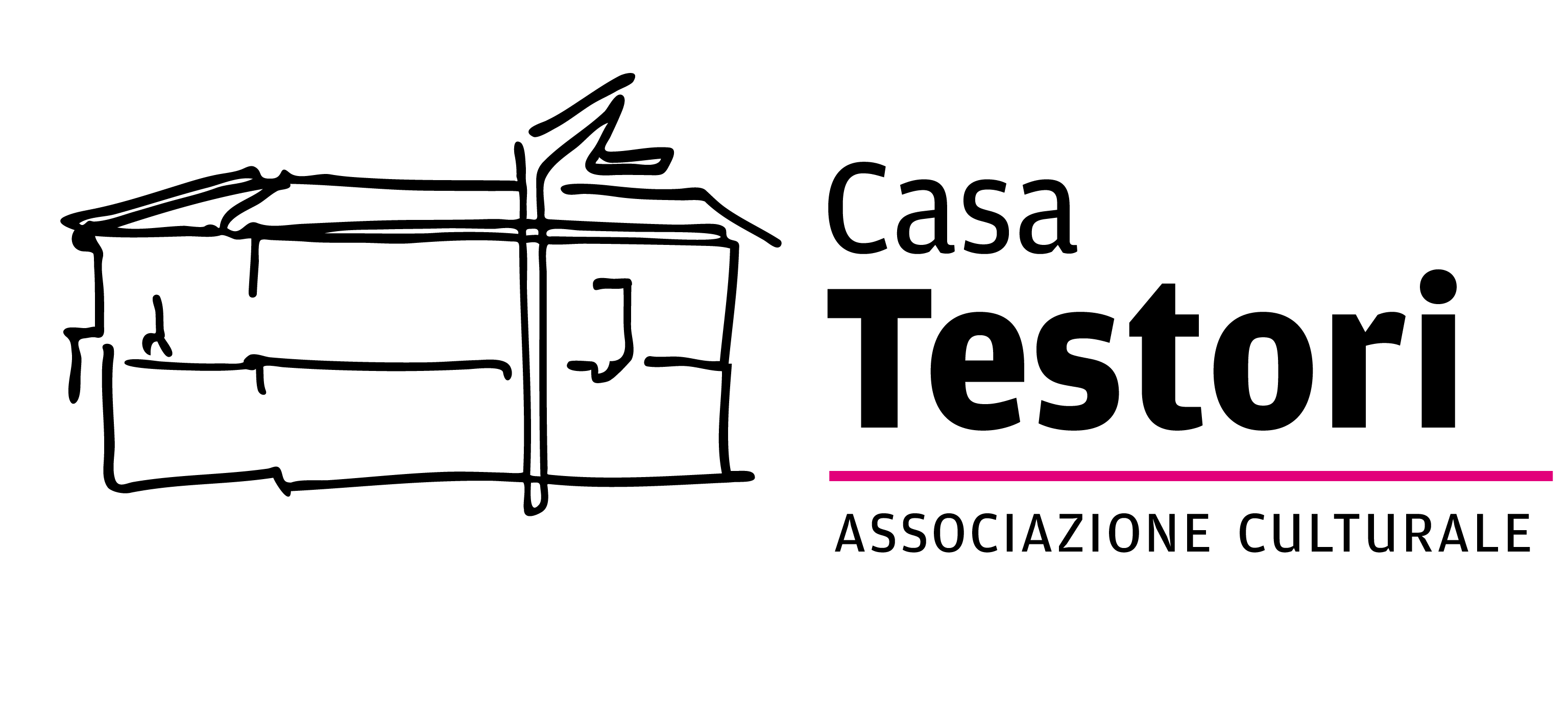PASOLINI A CASA TESTORI (PASOLINI AT CASA TESTORI)
A project by Casa Testori
Curated by Giovanni Agosti and Davide Dall’Ombra
Casa Testori
20 April – 1 July 2012

NOVATE BETWEEN FLORENCE, BOLOGNA AND CASARSA
Giuseppe Frangi
We do not hide the fact that bringing Pasolini to Casa Testori, even before being an exciting civil and cultural operation, is almost an act of reparation for a strange anomaly in our cultural history. That of two writers, poets, critics, polemicists and even painters who shared the destiny of always being misaligned with respect to the hegemonic currents of culture and who in their lives travelled along incredibly parallel paths without ever crossing paths. Therefore the exhibition that Giovanni Agosti and Davide Dall’Ombra have so intelligently and tenaciously conceived, planned and realised sounds like a long-awaited act of reparation. And also, much desired.
Pasolini and Testori are great figures of our recent past, but the impetus of their intelligence has all but run out. They are figures who still act on the present, reference points always sought after, and certainly not because they provide security. Pasolini and Testori had to cross paths sooner or later: and we are particularly happy that this happened in a “house”, the only relevant place for two wounded and stray souls like theirs. Casa Testori in this way reaffirms its nature as a special place, where those who arrive are never guests passing through, but are destined to leave a mark, to remain a friend, a part of a story that grows and continues.
Inside these walls, culture and human tension always go hand in hand. All this has been made possible thanks to the dedication of those who for months have worked on this project with enthusiasm and conviction, overcoming a thousand difficulties and a thousand obstacles. For Casa Testori and Associazione Testori, this was the most important and delicate challenge in their history. For this reason, together with Graziella Chiarcossi, who skilfully preserves the writer’s cultural heritage, we must thank the Institutes that lent their works and made their professionalism available to assist the curators, helping the project to be a success: the Gabinetto G. P. Vieusseux and the Fondazione Roberto Longhi of Florence, the Associazione Fondo P. P. Pasolini – Cineteca di Bologna and the Centro Studi P. P. Pasolini di Casarsa.
But I would also like to thank the sponsors who have believed in the project, despite the fact that times are not easy for all companies, and the Fondazione Comunitaria Nord Milano, which has understood how much value an exhibition like this generates for the community. The Region of Lombardy, the Province of Milan and the Municipality of Novate all lent us their institutional support, as did Giorgio Napolitano who, confirming the importance of this project, expressed “the support of the President of the Republic”.
PASOLINI AT CASA TESTORI
Davide Dall’Ombra
The exhibition being staged at Casa Testori is the result of several years of study, endless rethinking, many twists and turns, numerous discoveries, a few adjustments, sudden epiphanies and substantial refinements. It is the version of an account of Pier Paolo Pasolini’s life and work that, although we could not know it, we would always have wanted to do. The stature of the intellectual and the variety of themes that could be presented and the possible approaches required determined choices and a great deal of flexibility, to allow ourselves to be challenged by a rediscovered letter or by the clarification of a date and a subject, leading to rethinking destined to have a knock-on effect, right up to the setting up.
[…]
For the fifth time, an exhibition invades all the rooms of Casa Testori, and after the first three editions of Giorni Felici (2009-2011) and Andrea Mastrovito’s solo show Easy come, easy go (2011), the Casa (house) confirms that it has a strong physiognomy that it is natural to respect. Its layout in rooms helps the curators to organise their story into clear and conclusive chapters. The physical limits of the spaces put a brake on megalomania – all to the advantage of poetry – and the domestic matrix that invades the setting downplays the pretensions, diluting the prosopopoeia, sharpening the lyricism.
The eight rooms on the ground floor thus become eight themes to be explored and developed, one after the other, in a wonderfully chronological succession. The leitmotif is Pasolini’s graphic and pictorial activity, and it is this that calls the themes to itself, not vice versa: from the paintings and drawings of the 1940s, which start the exhibition, the sign of the drawing is retraced to the end. If we exclude the room devoted to the “Corriere della Sera”, where we have allowed ourselves to digress from the artistic production, it was to give an account of the fifteen years in which Pasolini himself left painting and drawing, engaging in other figurations. When lovers, friendships and lifelong masters – Ninetto Davoli, Laura Betti, Maria Callas or Roberto Longhi – were called into question, it was the presence of their portraits that demanded it.
From the self-portraits of the 1940s and 1960s to Narciso (Narcissus), from Longhi’s portraits taken from a counterpart image to the multiple portraits of Callas, and the mysterious profile of the obsessively repeated testament-drawing, the theme of the mirror is one of the leitmotifs of the exhibition. Thus the row of rooms on the ground floor is matched by a mirror on the second floor, heralded by posters on the staircase. This floor is dedicated to a selection of eight Pasolinian films, naturally one for each room, projected on a loop for the entire duration of the exhibition. It is a projection that should be read as a video-installation in its entirety, designed to give the visitor a glimpse of each film as he or she moves from one room to the next, encouraging unpredictable visual associations to be short-circuited in the mind. But it is also a unique opportunity to watch one or more films in their entirety, in a permanent Pasolinian review never attempted before.
